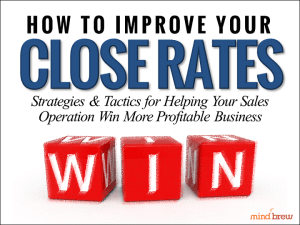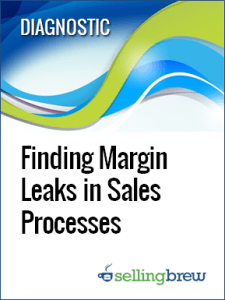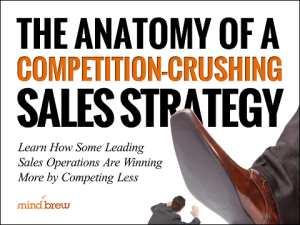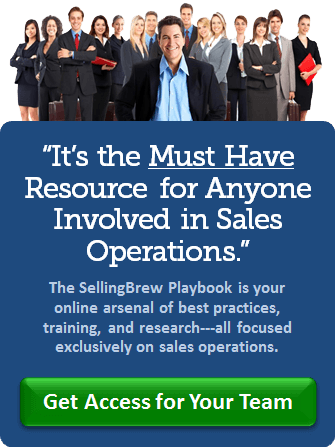During the subscriber webinar, How to Improve Your Close Rates, an attendee asked a question that lots of people can probably relate to:
We track and compare close-rates by sales rep. But sales managers always seem to brush-off the massive variances we’re showing as being “mix related”. Any suggestions?
Now, the person asking the question was probably hoping to get some tips, suggestions, or Jedi mind-tricks for getting their sales managers to stop being so obstinate, and actually do something about the poor performers.
But in this case, I had to be the jerk who actually agreed with sales management. After all, is it reasonable to expect that sales reps would have similar closing ratios on very different types of opportunities? Really? No way.
You see, unless every opportunity is similar— the same products, in the same quantities, to the same types of customers, under very similar circumstances—it’s hard to draw accurate conclusions about differences in salespeople’s overall close-rates. If each salesperson’s mix of opportunities is different, then it’s reasonable to expect that their close-rates would be different as well.
And therein lays the answer…
If you want to compare close-rates by salesperson in a credible way, you first need to create buckets (or segments) of opportunities that are very similar in makeup—i.e. similar products, similar deal sizes, similar customers, and so on. The deals in each of these “opportunity segments” need to be so similar that even the most stubborn sales manager would have to agree that it’s reasonable to expect similar conversion performance.
In a sense, by segmenting the opportunities first, you’re “mix adjusting” each salesperson’s closing ratios and thereby making it much more difficult to brush-off big variances.
Of course, the bigger question here is whether you really want to be doing this type of salesperson-focused analysis in the first place? I mean, it’s one thing to do it because management is requesting that it be done. But it’s quite another thing to be calling-out individual reps on your own initiative.
All things considered, I’d say that this is definitely one of those situations where if you’re going to do it, you’d better do it right!












